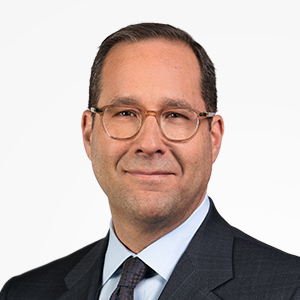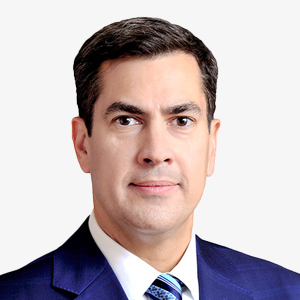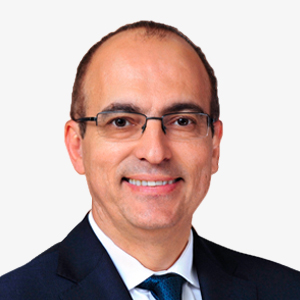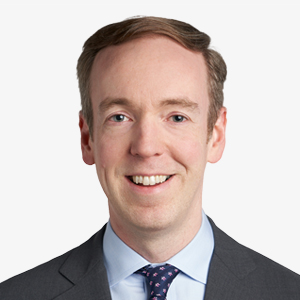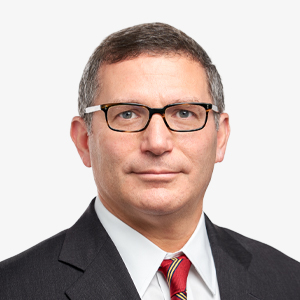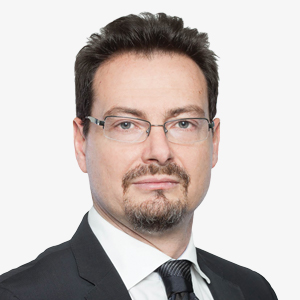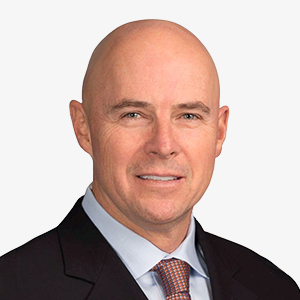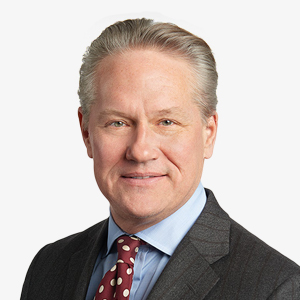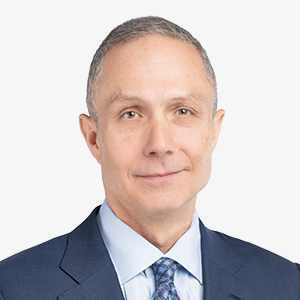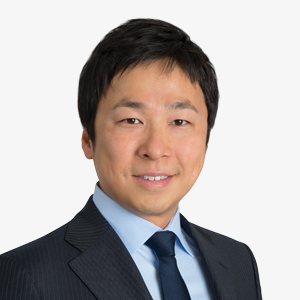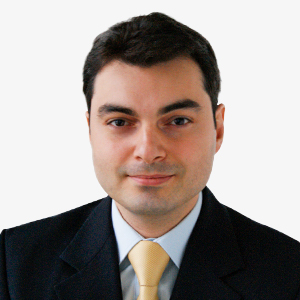Asset Allocation Committee Outlook
—Erik L. Knutzen, CFA, CAIA, Chief Investment Officer—Multi-Asset Class
Government bond yields have drifted lower and equity markets have rallied since our last Outlook. The Asset Allocation Committee (“the AAC” or “the Committee”) sees no imminent relief from the current challenging mix of slow real growth and tighter financial conditions, however, even as inflation begins to moderate from very high levels. We see a growing risk of recession in major economies. Even if we dodge that outcome, we regard this unfavorable growth-inflation mix as a big threat to corporate margins and earnings potential. In addition, the major central banks have reiterated, in ever more hawkish terms, their determination to tighten financial conditions, and in our view, that makes it unlikely that we will see a sustained rise in equity market valuations, a sustained narrowing of credit spreads or a sustained decline in government bond yields over the next 12 months. The market’s apparent reluctance to believe the central banks’ messaging has been causing volatility and bear-market rallies, however, and we believe that will continue through the first half of 2023. This outlook informs the AAC’s asset-class views, which have changed little since last quarter: we favor yield over equity risk; we view defensiveness, quality and income in equities positively; and we favor alternative diversifiers to mitigate portfolio volatility.
Markets spent October and November “fighting the Fed.” Despite the U.S. Federal Reserve (Fed) and the European Central Bank (ECB) expressing determination to tighten financial conditions, they loosened in both the U.S. and Europe as equities rallied, government yields declined and credit spreads narrowed. Futures markets repeatedly drew back from pricing for a Fed terminal rate higher than 5.0% and continue to price for a mid-year policy pivot that would see rates being cut before the end of 2023. (For comparison, we continue to anticipate a Fed terminal rate between 5.0% and 5.5% and an ECB terminal rate between 2.25% and 2.75% through 2023.)
The notable exception to all this has been Japan, where conditions tightened despite the Bank of Japan’s (BoJ) negative interest-rate and yield curve-control policies. With BoJ governor Haruhiko Kuroda’s term due to end in April, core inflation running at 3.7%, large companies offering above-inflation pay settlements and the yen losing a third of its value against the U.S. dollar, market participants had been anticipating a change to the yield curve-control policy, most likely in the first quarter of 2023.
In the event, the BoJ surprised the market by adjusting the policy on December 20. Japan’s 10-year government bond yield will now be allowed to move in a 50-basis-point range either side of a target of zero, wider than the previous range of 25 basis points on either side. While it retained its negative rate policy and increased its monthly bond purchases in order to smooth the adjustment, we regard this as a signal that the BoJ is positioning to join the hawks at last, preparing the ground for more aggressive moves once Kuroda’s successor is in place.
That, in turn, consolidates the outlook for continued tightening of global financial conditions in our view. While the Japanese yen and global fixed income markets responded in that vein, with a substantial jump in yields, outside of Japan itself the reaction from equity investors was more muted, suggesting a continued reluctance to adapt fully to the newly hawkish tone.
If market participants are underestimating how tight conditions might become, that means they are likely underestimating the stickiness of inflation, the coming, policy-induced economic slowdown and the impact of all this on corporate earnings potential. That view continues to underpin our underweight view across the board on equities, and it informed the downgrade in our view on commodities last quarter, from a strong to a moderate overweight.

There has been a lot of commentary over the past six months concerning the failure of most sell-side equity analysts to cut their corporate earnings forecasts for 2023. Another way to frame this is as a disagreement between top-down analysts, most of whom tend to think that the current unfavorable growth-inflation mix must be a threat to earnings, and most bottom-up analysts, whose stress testing does not result in a meaningful hit to the profit estimates for the stocks they are looking at. The AAC has discussed how the extreme divergence of real and nominal growth has been clouding this picture and making forecasts difficult.
The consensus view on the AAC is that earnings are likely to decline from current levels (equivalent to $220 per share for the S&P 500 Index) and force bottom-up analysts to rethink their estimates for 2023 (where the consensus sits at $230 per share). One reason, which we pointed out last quarter, is that current earnings quality, defined by the extent of use of accruals in accounting, is as poor as it has been for at least 30 years. We anticipate significant write-offs. In addition, while high inflation is currently showing up in top-line sales and costs are largely being passed on, a slowdown in which inflation is falling from a very high level is likely to result not only in falling sales, but a steeper decline in checkout prices compared with the average mild recession.
Within our broad-based underweight view on equities, our defensive stance also comes through in the nuances. European and emerging markets have a larger weighting to cyclical companies, banks and commodity businesses, and that informs the AAC’s marginally favorable view of U.S. over non-U.S. equities. We also favor large caps, defensive sectors and equity income.
Japan was the one non-U.S. equity market where we had an overweight view last quarter, and that has now been downgraded to neutral. Japanese equities have benefitted from the increasingly accommodative stance of the BoJ relative to its peers during 2022, as well as the resulting weakness in the yen and the resilience of the global economy. All of those factors now appear to be rolling over—and domestic wage inflation is an additional growing headwind. The AAC still sees Japan as a source of opportunity for active managers able to select from smaller, more domestically oriented companies, or from the financial sector that could benefit from a steepening yield curve, but it can no longer justify an overweight view on the market as a whole.

As well as favoring income within equities, we continue to favor fixed income over equities. The yield on a two-year U.S. Treasury bond is fast approaching the earnings yield of the S&P 500 Index, a relative level not seen since before the Global Financial Crisis. Yields in most major credit markets more than doubled during 2022. Why buy equities rather than bonds unless one believes there is an excessive equity risk premium to be harvested (which seems unlikely to us) or that substantial share buybacks will push up equity yields (which also seems unlikely, as it is now cheaper to issue equity and more costly to issue debt to fund buybacks)?


As such, the AAC continues to regard credit as a more favorable way to take risk, over equites. Within fixed income, the Committee now tactically favors investment grade over high yield, largely because the relative-value differential has narrowed and because members from our Fixed Income team anticipate some technical headwinds in high yield markets at the start of the year. Default estimates for the coming slowdown remain benign, as corporate leverage is generally still lower and cash holdings still higher than before the COVID-19 pandemic—but this has led to inflows and some spread-tightening through the fourth quarter, and we think it may be prudent to allow the market to absorb the new year’s new issuance before looking for more attractive entry points in high yield.
Similar to last quarter, the AAC again debated the relative merits of private credit versus public high yield. The fundamental outlook for both is quite similar. Default forecasts are comparable. Private credit has slightly lower interest coverage ratios, on average, but this is balanced by the “private-sponsor put”—the idea that incipient debt issues are simpler to address at companies with one or two private owners that have more flexibility to inject equity capital. In technical terms, over the coming few months the busy issuance calendar perhaps counts against high yield; by contrast, our Private Markets team believes there is substantially less dry powder in private lending than tends to be reported, leading to less competition for transactions. Ultimately, the Committee left its views on the two asset classes unchanged while continuing to favor both relative to equities.
While the AAC clearly favors fixed income over equity, it is important to recognize that tightening financial conditions suggest little scope for declining bond yields or narrower credit spreads, any more than they suggest a sustained equity market recovery. For that reason, the AAC maintains its overweight view on most alternative investment classes.
In liquid alternatives, we continue to favor global macro and trading-oriented strategies, and we see an attractive opportunity in Insurance-Linked Strategies, where premiums have in many cases doubled in the wake of Hurricane Ian.
In private equity, we continue to make the important distinction between the outlook for existing investments, which have generally been high-quality but bought at high valuations, and the outlook for investments made over the next three or four years with today’s dry powder. We are already beginning to see attractive transactions, particularly among “take-private” deals, where investors are getting the benefit of lower valuations for public relative to private companies, and “carve-outs,” as large companies prepare for the slowdown by selling off some of their non-core divisions. Private equity secondaries look increasingly like a buyer’s market to us, and we see a growing opportunity set in specialist capital solutions. All of this fits with one of our general themes for 2023: being a provider of liquidity when traditional sources of liquidity, particularly bank capital, have dried up.
The AAC also maintains its overweight view on private real estate. We think core real estate valuations still need to adjust downward, but value-add and opportunistic investments, non-traditional sectors and private real estate secondaries could offer attractive opportunities. There are also interesting dynamics in listed real estate investment trusts (REITs). Here, public market valuations for core assets have already adjusted, potentially overshooting in many cases. Moreover, the pressure from investor redemptions faced by some high-profile private REITs might enable public REITs to buy assets from them at a discount—again underlining the advantage of being a liquidity provider in the current environment.
To sum up, the AAC heads into 2023 concerned that equity markets in particular may be underestimating not only the potential stickiness of inflation and central banks’ determination to tame it, but also the growth- and profits-sapping impact of those dynamics. This leads us to remain cautious in our asset-class views and focused on the search for alternative portfolio diversifiers. We also continue to believe that investors can benefit from a nimble, tactical stance, acting as liquidity providers, as the cross-currents from economic data releases, central bank messaging and evolving investor sentiment generate the potential for heightened volatility and value opportunities.
While the Bank of Japan (BoJ) chose to surprise the markets with the early adjustment to its yield curve-control policy, it was also careful to try to limit the impact and kick off its transition in an orderly way.
First, there was the timing. Fewer traders are at their desks in late December than during the first quarter, which is when the markets had anticipated the adjustment. It also gives investors three months to digest the decision before BoJ governor Haruhiko Kuroda hands over to his successor, enabling that successor to frame tightening as a continuation of policy rather than risk being labelled as more hawkish than Kuroda.
Second, alongside allowing 10-year yields to trade in a wider range around zero, the BoJ increased its monthly bond purchases from ¥7 trillion to ¥9 trillion ($68.2bn). The overall policy change sends out a message that the BoJ is becoming less accommodative and joining the world’s central-bank hawks, but the numbers tell a subtler, more incremental story.
As a result, the impact on the local rates market was relatively subdued. It quickly moved to price for an exit from negative policy rates, but one that would be orderly and gradual.
The impact was stronger elsewhere, however. The yen strengthened substantially. Japanese equities sold off, with the notable exception of the banks that stand to benefit from a steeper yield curve. And worldwide, government bond yields jumped. This was perhaps partly a recognition that the last major dovish holdout among the major central banks is positioning to turn hawkish. Mostly, however, the move came in anticipation of a major repatriation of capital by Japanese yield-seeking investors—some of the biggest jumps were in Australian bond yields, where Japanese investors are a big presence.
Could this be the beginning of a major, disruptive wave of portfolio flows?
One argument against that is that Japanese long-term holders of foreign bonds are sitting on substantial mark-to-market losses, which would be a big incentive not to sell now. But what if they have already sold many of those assets? According to Deutsche Bank, Japanese portfolio flow data show a record amount of foreign bond liquidation over the last 12 months.
The fact that this happened while the yen went through one of its most dramatic ever depreciations strongly suggests that the proceeds of these liquidations were not repatriated—and indeed, Deutsche Bank also notes that Japanese investors have accumulated almost $100bn of U.S. dollar cash balances over the past year.1
That doesn’t mean the dam will break immediately. There is still a five-percentage-point yield differential between the U.S. dollar and the yen, and a four-percentage-point yield pick-up between dollar cash and the Japanese 10-year yield cap, even after the recent policy change.
We therefore anticipate growing repatriation flows as BoJ policy moves closer to that of the ECB and the Fed, but we do not see a major economic incentive for repatriation as things stand.
That informs our view that adjustments to the BoJ’s transition in both Japanese and global bond markets can still be orderly. It also informs our still incremental overweight view on the yen, where we are long-term bullish, but see near-term headwinds in yield differentials. This outlook could change quickly, however, and we think investors should be especially watchful during the time around the leadership transition at the BoJ.
This time last year, the AAC was anticipating a year of heightened volatility, but debating whether the major bouts were more likely to come in the first or the second half of the 2022.
Those worrying about the first half of the year got it right. Inflation started to run away, central banks made an aggressively hawkish pivot, real rates soared, and equity market valuations plummeted. By contrast, in the second half of 2022 the MSCI World Index gained 3.2%.
A year later, the Committee is engaged in a very similar debate. For six months, we have been arguing that most of the correction in equity markets so far can be accounted for by the rise in real rates. We believe there is still an earnings outlook downgrade to come that will result in a second leg of this bear market. But again, there is uncertainty about whether this will come sooner or later in 2023.
On the face of it, this might seem strange. The intuitive outlook would be that recent earnings forecast downgrades build momentum through the first half of the year and get quickly priced in by the market, giving us the trough in equities around or shortly after the trough in economic growth. History suggests that equity bear markets have tended to bottom-out early in recessions and begin their recoveries before the return to economic growth.
So why the doubts?
First, the macro picture in the first half of 2023 is likely to be very unusual. For sure, growth is likely to be slowing and earnings forecasts are likely to be declining; but inflation is likely to be easing from its current, punishingly high level, central banks are likely to be tapering or even pausing rate increases, and the dollar could be weakening. That is not an obvious recipe for outright bearishness.
Second, the technical backdrop could be supportive to equities. Algorithmic trading programs appear to have been short equities for some time, now, including volatility-determined strategies that respond to what’s going on in bond markets. Should rates markets stabilize, those strategies could switch to being long and leveraged in equities.
Finally, there is deep uncertainty on the Committee about when the economic recovery will begin and what it might look like— and therefore, what the market could be pricing for in the fourth quarter of 2023 and beyond.
Some AAC members think that market participants remain anchored to expectations shaped by the post-2009, pre- pandemic environment, whereas we believe we are more likely to emerge into a more challenging “old normal” of structurally higher inflation and rates, potentially paired with additional structural growth headwinds. Should the market begin to adopt the same view later this year, it could prompt more pessimistic long-term discounting, even as we recover from the cyclical trough in growth.
The Committee is split fairly evenly between those who take the more intuitive view and those who express doubts.
Where do they find consensus? On two points. Equity markets did not reach their lows for this cycle in mid-October 2022. And, throughout 2023, the ability to trade tactically could be advantageous when it comes to navigating this confluence of macro, technical and fundamental cross-currents.


- The Committee maintained its underweight views on U.S. large caps and U.S. small- and mid-caps.
- We believe earnings estimates will be revised downward meaningfully over the coming months.
- The AAC continues to favor lower beta equity exposure for defensiveness and reduced exposure to rising rates, and value over growth, with a defensive tilt via high-quality, income-oriented stocks.
- That said, we see continued potential for technical market rallies, particularly in the first half of 2023.
- The Committee maintained its underweight view.
- The AAC has downgraded its view on Japan from overweight to neutral following the policy change at the BoJ, while the growth and inflation outlook for Europe remains highly uncertain, and earnings estimates still appear over-optimistic.
- The Committee maintained its underweight view.
- There may now be value opportunities in commodity-exporting countries, and in Asia as China emerges from its recent COVID-19 lockdowns, but overall we believe deteriorating global sentiment informs against seeking risk exposure in emerging markets.


- The Committee maintained its overweight view, and upgraded its views on U.S. government securities and asset- and mortgage- backed securities.
- We now marginally favor investment grade over high yield due to relative value moving in its favor recently and potential technical headwinds against high yield in the first quarter of 2023.
- At current yields, we believe investment grade may offer some diversification during the economic slowdown.
- The Committee maintained its underweight view.
- Inflation and central bank hawkishness have started to push government bond yields back up, notably in Japan since the policy change at the BoJ, but non-U.S. central banks still have some way to go to catch up with the Fed on policy tightening.
- The Committee maintained its neutral view.
- The AAC believes the general strength of corporate balance sheets will support credit markets as economic growth slows, but continues to favor the highest-quality issuers and short duration.
- It continues to favor high yield over equities as a way to take portfolio risk, but within fixed income it now marginally favors investment grade due to relative value moving against it recently and potential technical headwinds in the first quarter of 2023.
- The Committee upgraded its view from underweight to neutral.
- The AAC upgraded its view on emerging markets debt from underweight to neutral given attractive relative yields and the potential to benefit from a softening dollar and China re-opening.


- The Committee maintained its overweight view.
- While the AAC remains strongly positive when it comes to the supply side of the fundamental equation, there are recession risks building around the demand side.
- We regard commodities as a potential hedge for any upside growth surprise from China over the coming months.
- The Committee maintained its overweight view.
- During the ongoing economic slowdown, the AAC sees a growing role for alternative investments that have tended to exhibit uncorrelated returns, mitigate the volatility of traditional asset classes or take advantage of that volatility; this reflects a favorable view of active management, in general.
- We favor strategies that are fundamentally uncorrelated (such as Insurance-Linked Strategies, where we now also see attractive value), that seek to harvest a volatility premium (such as option put-write strategies) or that take advantage of global macro trends or short-term trading opportunities.
- The Committee maintained its overweight view.
- The ability to create value away from the potential volatility of the public markets may provide some portfolio stability as the cycle matures.
- We favor businesses with strong pricing power, low fixed labor costs and limited commodity inputs, as well as real asset exposures in real estate and infrastructure.
- New commitments to vintages raised at the turn of cycles and the start of economic and market downturns have historically performed well, largely due to their investments being made while equity valuations were declining; we are beginning to see the first of these downturn opportunities in “take-private” and “carve-out” transactions.
- The Committee maintained its neutral view.
- While corporate fundamentals remain quite strong, relative value over public high yield bonds is not as attractive as it was before 2022, and refinancing risk is slightly higher than in public markets over the next two years.
- The AAC continues to see opportunities in special situations and capital solutions, such as providing preferred stock capital to private companies.
- The Committee maintained its overweight view.
- The sector’s inflation sensitivity is attractive.
- We believe post-pandemic growth dynamics will continue to support key sectors such as data centers, warehouses, industrial and multi-family residential.
- Rising rates and a deteriorating macro environment have soured investor sentiment and may be opening up value opportunities.
- The AAC maintained its neutral view.
- The currency is still overvalued based on purchasing power parity (PPP) metrics, but the recent correction means it no longer looks very expensive relative to interest rate differentials, in our view.
- Higher growth expectations for the U.S. relative to the rest of the world, together with its domestic energy capacity, could support the dollar, especially during times of heightened risk aversion.
- These factors are balanced by the potential for weakening U.S. economic data and easing geopolitical tensions, together with negative real yields at the short end of the U.S. curve and the keenness of market participants to position for a Fed policy pivot in 2023.
- The AAC maintained its neutral view.
- The euro is undervalued based on purchasing power parity (PPP) metrics, and while the eurozone current account has deteriorated, it remains in surplus, and Europe’s terms of trade have improved recently.
- The pivot to a more hawkish stance by the ECB is drawing capital flows back to Europe—and its solution for peripheral eurozone spread dislocation could enable the central bank to achieve a higher terminal interest rate, and better address the inflation threat.
- China’s slowdown has been negative for Europe’s cyclical economy, and much therefore depends on how China navigates away from its lockdown policies.
- The ongoing geopolitical crisis could mean persistent high energy costs for manufacturers and consumers, as well as general inflationary pressure.
- The AAC maintained its overweight view.
- Both PPP and real exchange rates suggest the JPY is undervalued, market participants are very short the currency, and the Bank of Japan has surprised the market with a loosening of its yield curve control policy.
- This remains a cautious view, however, as shorter-term dynamics such as wide interest rate differentials and the resulting high cost of hedging U.S. dollar exposures back to the yen continue to act as headwinds against the currency.
- The AAC maintained its underweight view.
- Despite being undervalued in terms of PPP and interest rate differentials, stagflation concerns are elevated as the Bank of England is hiking rates into an economic slowdown and the government is pursuing fiscal consolidation.
- The U.K. is exhibiting the weakest post-pandemic growth of any G10 economy, and its balance of payments is a concern in light of tight liquidity in financial markets.
- The AAC maintained its neutral view.
- The Swiss franc is still very overvalued on PPP measures and, as one of the most attractive currencies for funding carry trades, it could weaken as global yields rise.
- The Swiss National Bank slowed the pace of its rate hikes to 50 basis points, but did not rule out further interventions in the foreign exchange markets as a secondary tool to fight inflation.
- That said, Switzerland has a positive current account balance and currently appears to be trading on its status as one of a shrinking group of havens, with the deteriorating geopolitical situation being a cause of recent strength.
Joseph V. Amato
Erik L. Knutzen, CFA, CAIA
Ashok Bhatia, CFA
Thanos Bardas, PhD
Joseph V. Amato serves as President of Neuberger Berman Group LLC and Chief Investment Officer of Equities. He is a member of the firm’s Board of Directors and its Audit Committee. His responsibilities also include overseeing the firm’s Fixed Income and hedge fund businesses.
Previously, Joe served as Lehman Brothers’ Global Head of Asset Management and Head of its Neuberger Berman subsidiary, beginning in April 2006. From 1996 through 2006, Joe held senior level positions within Lehman Brothers’ Capital Markets business, serving as Global Head of Equity Research for the majority of that time. Joe joined Lehman Brothers in 1994 as Head of High Yield Research. Prior to joining Lehman Brothers, Joe spent ten years at Kidder Peabody, ultimately as head of High Yield Research.
He received his BS from Georgetown University and is a member of the University’s Board of Directors. He currently serves on the McDonough School of Business Board of Advisors and the Psaros Center for Financial Markets and Policy Board of Advisors. He is Co-Chair of the New York City Board of Advisors of Teach for America, a national non-profit organization focused on public education reform. He is also a Board Member of KIPP NJ, a charter school network based in Newark, NJ, which focuses on educational equity.
Ashok Bhatia, CFA, Managing Director, joined the firm in 2017. Ashok is Co-Chief Investment Officer for Fixed Income, co-Head of Multi-Sector Fixed Income, and a member of Neuberger Berman's Partnership and Asset Allocation Committees and Fixed Income's Investment Strategy Committee. Previously, Ashok has held senior investment and leadership positions in several asset management firms and hedge funds, including Wells Fargo Asset Management, Balyasny Asset Management and Stark Investments. Ashok has had investment responsibilities across global fixed income and currency markets. Ashok began his career in 1993 as an investment analyst at Morgan Stanley. Ashok received a BA with high honors in Economics from the University of Michigan, Ann Arbor, and an MBA with high honors from the University of Chicago. He has been awarded the Chartered Financial Analyst designation.
As previously announced, Brad Tank will transition from Co-CIO of Fixed Income to a Senior Advisor role at the end of 2024, at which time Ashok Bhatia will assume the role of sole CIO of Fixed Income.
Timothy F. Creedon, CFA
David G. Kupperman, PhD
Ugo Lancioni
Robert Surgent
Brad Tank
Anthony D. Tutrone
Tokufumi Kato, PhD
Brad Tank, Managing Director, joined the firm in 2002. Brad is Co-Chief Investment Officer and the Global Head of Fixed Income. He is a member of Neuberger Berman’s Partnership, Investment Risk, Asset Allocation Committees and Fixed Income’s Investment Strategy Committee. From inception in 2008 through 2014, Brad was also Chief Investment Officer of Neuberger Berman’s Multi-Asset Class Investment business. From 1990 to 2002, Brad was director of fixed income for Strong Capital Management in Wisconsin. He was also a member of the Office of the CEO and headed institutional and intermediary distribution. In 1997, Brad was named “Runner Up” for Morningstar Mutual Fund Manager of the Year. From 1982 to 1990, he was a vice president at Salomon Brothers in the government, mortgage and financial institutions areas. Brad earned a BBA and an MBA from the University of Wisconsin.
As previously announced, Brad Tank will transition from Co-CIO of Fixed Income to a Senior Advisor role at the end of 2024, at which time Ashok Bhatia will assume the role of sole CIO of Fixed Income.
Hakan Kaya, PhD
Raheel Siddiqui
Raheel Siddiqui, Managing Director, Senior Research Analyst, joined the firm in 2004. Raheel is the Senior Investment Strategist in the Neuberger Berman Global Equity Research Department. In this role he researches impending inflection points in the business cycle, risk appetite, inflation, global asset classes, US sectors, style (growth vs. value), and size to enhance fundamental stock selection and portfolio construction processes by taking advantage of emerging trends not fully appreciated by the market. His research spans finding systematic ways of distilling leading or confirming messages from macroeconomic, quantitative, derivatives data, and behavioral data as well as periodically evaluating portfolios for efficient asset allocation.
Prior to this role, Raheel was a part of Lehman Brothers US Equity Strategy Team where he co-authored over 100 strategy reports, many of which were quoted in the Wall Street Journal, Financial Times, and Barron’s. Raheel also worked as a senior member of the Corporate Development team at Monsanto for six years, where he developed industry leading and award winning approach for valuing genomics assets.
Raheel earned MS/BS degrees in Biochemical Engineering from the Indian Institute of Technology and an MBA from Columbia University. Raheel has also been published with the American Institute of Physics.
Accolades referenced are issued by independent third-parties and information regarding specific criteria for accolades is available upon request and generally may be found on such third-party’s website. Barron’s rankings are based on a proprietary formula that considers various factors: assets under management, revenues generated by advisors for their firms, and the quality of the advisors’ practices. Investment performance is not an explicit criterion because performance is often a function of each client’s appetite for risk. Third-party accolades referenced do not reflect the experiences of any Neuberger Berman client and readers should not view such information as representative of any particular client’s experience or assume that they will have a similar investment experience as any previous or existing client. Third-party accolades are not indicative of the past or future performance of any Neuberger Berman product or service.
